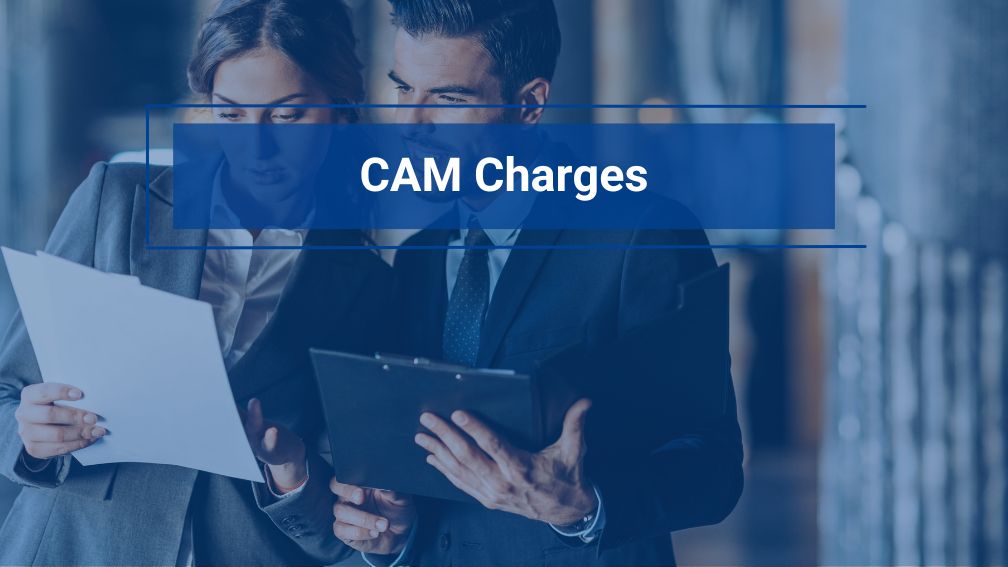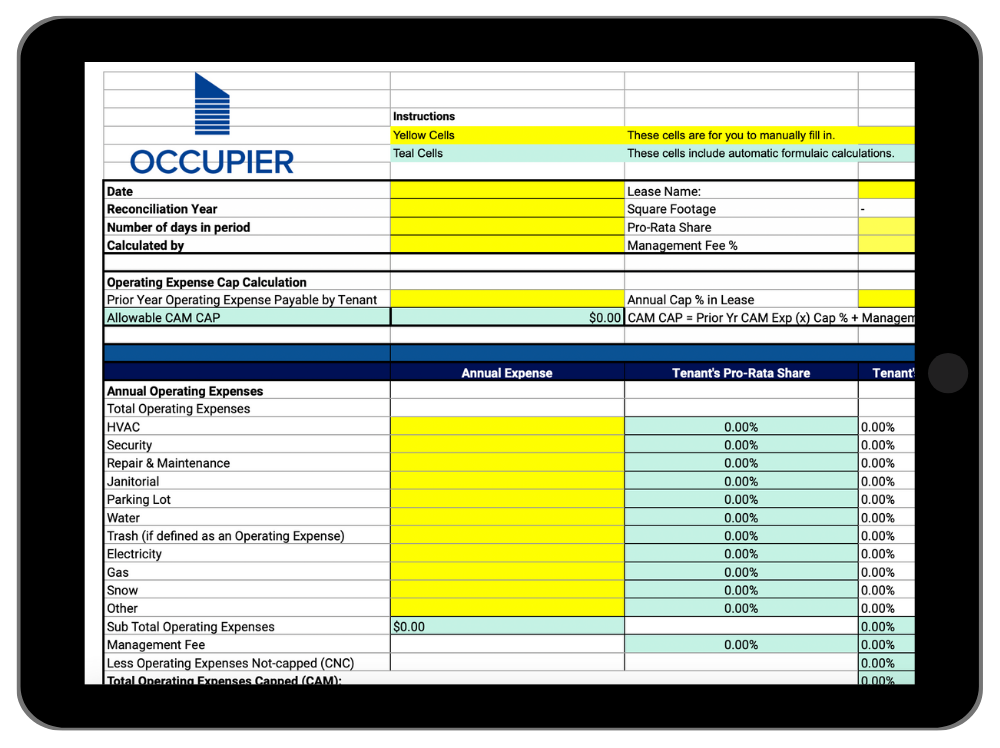CAM Charges: A Guide to Common Area Maintenance
Last Updated on May 23, 2025 by
As a commercial tenant, it’s important to familiarize yourself with the various charges and fees associated with leasing and managing commercial properties. One such charge that often comes up in lease agreements is the CAM charge, also known as Common Area Maintenance. In this comprehensive guide, we will delve into the intricacies of CAM charges and explore the role they play in lease management and accounting processes.
What are CAM Charges?
A CAM (Common Area Maintenance) charge is an additional fee that commercial tenants are required to pay on top of their base rent. Common area expenses are intended to cover the cost of maintaining and managing shared spaces within a property, such as lobbies, elevators, hallways, parking lots, and common restrooms. CAM charges are typically outlined in the lease agreement and divided among the tenants based on their proportionate share of the overall property.
The purpose of CAM charges is to ensure that the property’s expenses associated with maintaining the common areas are shared among the tenants who benefit from their use. These charges contribute to the overall upkeep, cleanliness, and functionality of the shared spaces, enhancing the overall experience for both tenants and their customers.
Understanding the Components of CAM Charges
To gain a better understanding of CAM charges, it’s essential to familiarize yourself with the various components that may be incorporated into the calculation. Generally, CAM charges consist of the following:
1. Maintenance and Repairs
This component includes expenses incurred for routine repairs, upkeep, and maintenance of common areas. It covers a wide range of tasks, such as cleaning services, landscaping, snow removal, HVAC maintenance, painting, and general repairs to shared facilities. These expenses are crucial to ensuring the common areas remain in good condition and meet the expectations of tenants and their customers.
2. Utilities
CAM charges may also include the cost of utilities consumed in shared areas, such as electricity, water, gas, and sewer services. These expenses could fluctuate based on factors like usage, seasonal variations, and overall consumption by tenants and visitors. It is essential to review the lease agreement to understand how utility costs are allocated and included in the CAM charges.
3. Property Management Fees
Property management fees encompass the cost of overseeing and managing the common areas. This includes the salaries of property managers, security personnel, and other administrative staff responsible for the smooth operation of shared spaces. Property management fees contribute to maintaining a safe and well-managed property environment for all tenants.
4. Insurance
Commercial properties require insurance coverage to protect against potential risks and liabilities. CAM charges may include the portion of insurance premiums related to the common areas. This ensures that all tenants bear a fair share of the insurance costs associated with protecting the property and mitigating potential risks.
5. Administrative Expenses
Administrative expenses cover the costs associated with accounting, record-keeping, legal services, and other administrative tasks related to managing the common areas. These expenses ensure that the necessary paperwork, reporting, and compliance requirements are met efficiently.
CAM Reconciliation Template
Calculating CAM Charges
CAM charges are typically calculated based on the square footage of the leased space and the proportionate share it represents in relation to the total leasable area. The lease agreement should specify the method used for determining the tenant’s share of CAM charges.
It’s important to note that CAM charges can be calculated in different ways, depending on the lease structure. Common methods include:
1. Pro Rata Share
Under the Pro Rata Share method, the CAM charges are distributed among tenants based on the proportionate size of their leased space in relation to the total leasable area. For example, if a tenant occupies 20% of the total leasable area, they would be responsible for 20% of the CAM charges. In other words, the tenant’s rented square footage of the space dictates the percentage of maintenance costs that they are responsible for.
2. Fixed Percentage
In some cases, CAM charges may be calculated based on a fixed percentage assigned to each tenant. This fixed percentage is determined by the landlord and remains constant throughout the lease term. Each tenant’s CAM charges are then calculated by applying their fixed percentage to the overall CAM expenses.
3. Gross-up Provision
A gross-up provision is included in lease agreements to account for situations where the occupancy rate of a property is less than 100%. In such cases, the landlord may adjust the CAM charges to reflect the expenses that would be incurred if the property were fully occupied. This ensures that the burden of these expenses is not solely placed on the tenants occupying the property.
Reviewing the Lease Agreement
When considering leasing a commercial property, it is crucial to thoroughly review the lease agreement, paying close attention to the section that outlines CAM charges — what expenses are included, and how they will be invoiced and paid.
Here are some key points to look for in the lease agreement:
- Detailed breakdown of CAM charge components
- Explanation of calculation method (pro rata, fixed percentage, gross-up provision)
- Frequency of CAM charge calculations and adjustments
- Procedures for invoicing and payment of CAM charges
- Documentation requirements for CAM charge expenses
- Clauses regarding dispute resolution or CAM charge audits
Understanding the terms and conditions surrounding CAM charges will help you anticipate and budget for these additional expenses throughout the lease term.
Understanding Your Share of CAM Charges
While CAM charges may increase the overall cost of occupying a commercial space, they offer several benefits to tenants and property owners alike:
1. Fair Distribution of Expenses
CAM charges ensure that the expenses associated with maintaining shared areas are distributed among tenants in a fair and proportional manner. This helps avoid potential disputes and ensures that all tenants contribute to the upkeep of the property.
2. Professional Property Management
These expenses enable property owners to hire professional property management teams to oversee the maintenance and management of the common areas. This ensures that the property is well-maintained, creating a positive environment for tenants and their customers.
3. Enhanced Property Value
By investing in the upkeep of shared spaces through CAM charges, property owners can improve the overall value of the property. Well-maintained common areas attract more customers and tenants, thereby increasing the property’s desirability and potential rental income.
| CAM Fees | Retailers | Office | Industrial |
|---|---|---|---|
| Admin Fees | ✔️ | ✔️ | ✔️ |
| Property Taxes | ✔️ | ✔️ | ✔️ |
| Property Insurance | ✔️ | ✔️ | ✔️ |
| Delivery Areas | ✔️ | ✔️ | |
| Loading Docks | ✔️ | ✔️ | |
| Parking Lot Matienance | ✔️ | ✔️ | ✔️ |
| Driveways | ✔️ | ✔️ | |
| Sidewalks | ✔️ | ✔️ | |
| Water | ✔️ | ✔️ | |
| Common Area Lighting | ✔️ | ✔️ | ✔️ |
| Electric | ✔️ | ||
| Janitorial | ✔️ | ||
| Sewage | ✔️ | ||
| Window Washing | ✔️ | ||
| Stairwell Maintenance | ✔️ |
Lease Management & Accounting of CAM Charges
In addition to comprehending the fundamental aspects of CAM charges, effective lease management and accounting practices are crucial for both tenants.
CAM reconciliations, governed by CAM clauses within lease agreements, form a pivotal part of this process. These clauses define the scope of common area maintenance expenses, encompassing maintenance costs, monthly costs, and uncontrollable expenses related to shared spaces. These reconciliations involve a meticulous review and adjustment of the estimated CAM charges to align with the actual expenses incurred during a specified period.
This dynamic aspect ensures a fair distribution of costs among tenants, maintaining transparency and equity in the financial aspects of lease agreements. As tenants navigate the landscape of CAM charges, understanding and actively engaging with CAM clauses becomes integral to sound Lease management and accounting practices.
Disputes and Resolution
Despite efforts to ensure transparency and fairness, disputes regarding CAM charges may arise between tenants and property owners. In such cases, it’s important to follow the dispute resolution procedures outlined in the lease agreement.
If you have concerns about the accuracy or fairness of CAM consider the following steps:
- Review the lease agreement: Carefully review the provisions related to CAM ensuring that the calculations and expenses are in compliance with the agreed-upon terms.
- Open communication: Engage in open and respectful communication with the property owner or management team to discuss your concerns and seek clarification on any ambiguities. Maintaining a positive working relationship can often help resolve issues amicably.
- Professional advice: If disagreements persist, consider seeking advice from a qualified professional, such as a Certified Public Accountant (CPA) or a real estate attorney who specializes in lease negotiations and commercial property management.
- Mediation or arbitration: In cases where direct negotiations fail to resolve the dispute, mediation or arbitration can be pursued as a means to find a mutually acceptable solution. These alternative dispute resolution methods can help avoid costly and time-consuming litigation.
Remember, approaching disputes with a respectful and solution-oriented mindset can lead to a more favorable outcome for all parties involved.
CAM Charges – Conclusion
CAM charges play a vital role in ensuring the proper maintenance and management of common areas within commercial properties. By sharing the expenses associated with shared spaces, tenants contribute to creating a desirable and well-functioning environment for their businesses and customers.
As a commercial tenant, understanding CAM charges and reviewing the lease agreement thoroughly can help you accurately budget for these additional expenses. By engaging in open communication and seeking professional advice when needed, you can navigate any potential disputes and maintain a positive working relationship with the property owner or management team.
Lease Accounting Resources
Check out our resource hub. We have the templates, spreadsheets, and calculators to help you manage entire lease lifecycle.

